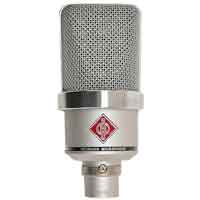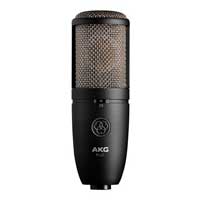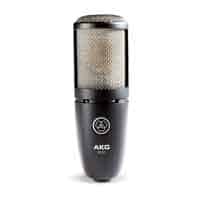In our search for the best microphone for podcasting and voice over in 2024, we shortlisted eight of the most popular choices and gave them a thorough test drive.
Our main considerations were sound quality, price, and ease-of-use.
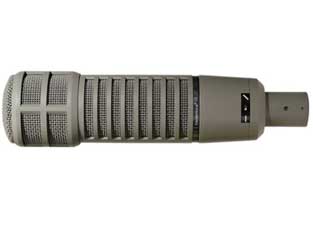
Pros
- Iconic broadcast sound that still manages to bring out the natural qualities in a voice.
- One of the best all-purpose mics available
- Also great for Sung Vocals, Kick drums, Brass
- Very little Proximity Effect
Cons
- Large size not ideal for some applications
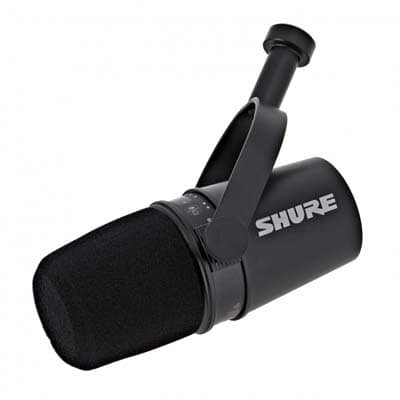
Pros
- Great sound with XLR
- Great value
- USB and XLR
- Rejects unwanted noise
Cons
- USB sound not so great.
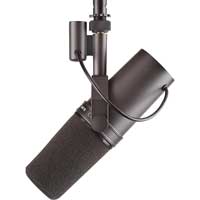
Pros
- Iconic broadcast sound
- Flatters most any voice
- Rejects unwanted noise
- Excellent for other musical applications
Cons
- Requires considerable gain from preamp
- Heavy
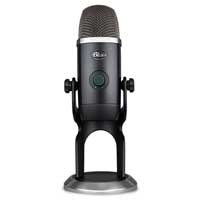
Pros
- Good sound quality
- Great price
- No need for audio interface
Cons
- Latency could be an issue with larger projects
- Heavy
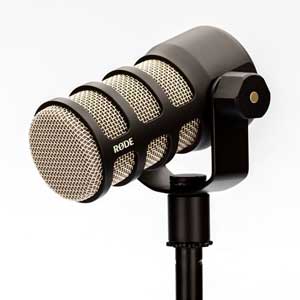
Pros
- Quality build
- Good sound on spoken word applications
- Aggressive price point, excellent value
Cons
- Sound might not be to your taste – has a consistent ‘radio voice’ color
- Hyped frequency response limits its use to spoken word applications
Pros
- Top-end of spoken word mics
- Pristine details on the high frequencies
- Versatile for any home studio
Cons
- Pricey
- Picks up everything in room
Pros
- Great Value
- Switchable polar patterns
- Versatile
Cons
- Picks up everything in the room
- Lacks refined sound of the pricier options on this list
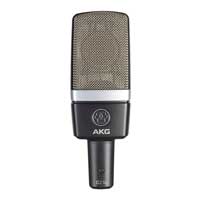
Pros
- Refined, detailed, balanced sound.
- Great studio mic for musical applications
- Handles plosives and sibilance with ease
Cons
- There is better value on this list for spoken word
- Picks up everything in the room
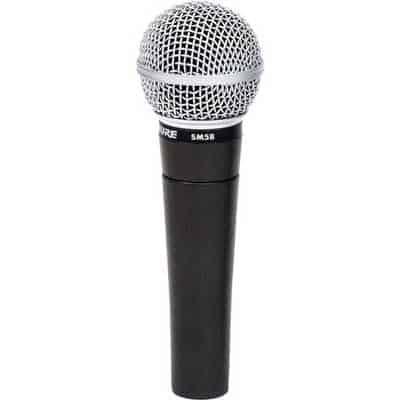
Pros
- ‘Good enough’ sound for most applications
- Great price
- Rejects unwanted noise
Cons
- Dull sound with spoken word compared to others on this list
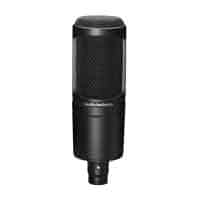
Pros
- Inexpensive
- Gives a good amount of detail
Cons
- Sound is a bit thin
- Picks up everything in the room
- High self-noise
Best Podcasting and Voice Over Mic Video: See the mics in Action
How we Rated Mics for Podcasting and Voice over
With this list, we have tried to review entry-level mics, professional broadcasting mics, and everything in between.
The ratings here are solely based on each microphone’s value-for-money and performance with spoken word applications, not the mic’s overall value or performance.
Our main considerations were the following:
Sound Quality for Spoken Word
Sound quality for podcasting and voice over comes down to detail and unwanted noise rejection.
Dynamic microphones are great at rejecting unwanted noise but they tend to lack the luscious detail of condenser microphones. Condenser microphones have great detail but their high sensitivity means they also pick up unwanted neighbouring noise.
Check this out for more information on microphone types.
Cost
The highest-end mics are not necessary if you are only using the mic for spoken word applications. If anyone tells you you need a Neumann U87 (full review of the Neumann U87) for podcasting, don’t believe it! We say this for two reasons.
One, the top-shelf condenser mic’s sensitivity and lack of neutral color won’t be that helpful unless you have an acoustically treated space.
And two, the greatness of top-shelf condenser mics cannot be fully appreciated when used only for the spoken word. The highest-end condenser mic we would recommend is the Neumann TLM 102.
Ease-of-use
The final factor considered was how easy the mic is to set up and use.
A typical Podcasting or Voice Over set-up includes a microphone, an audio interface, and a computer with a DAW (short for Digital Audio Workstation, in layman’s terms, recording software).
See our Podcasting Tips for Beginners for more information on getting set up. And if you need some podcast editing tips, we’ve got you covered too.
See this article for more information about Audio Interfaces for Podcasting and Voice Over.
The microphones we considered here have either a USB or XLR connection. With USB, you can connect directly to your computer without an audio interface. XLR connections require an audio interface to convert the analog signal to a digital one your computer can understand.
How We Tested These Mics
We used a Universal Audio Arrow Thunderbolt 3 powered Interface recorded with Logic Pro X. We adjusted the gain for each mic to taste. There is no EQ or compression applied to any of the audio clips here.
See our Gear category page for all of our reviews of microphones, audio interfaces, headphones and other audio gear. See here for all of our podcasting gear reviews.
Our Pick!
Electro-Voice RE20
our rating
4.9
Pros
- Iconic broadcast sound that still manages to bring out the natural qualities in a voice.
- One of the best all-purpose mics available
- Also great for Sung Vocals, Kick drums, Brass
- Very little Proximity Effect
Cons
- Large size not ideal for some applications
Bottom Line:
A classic broadcast microphone with unique characteristics. Its large sweet spot, minimal proximity effect, and excellent detail, combine for a very natural sound and make it a must-have in studio mic lockers.
See here for a head-to-head comparison of the RE20 and the SM7B.
What’s in the box?
- The Mic
- Swivel Mount
- Carry-case
Who is the Electro-voice RE20 for?
The Electro-voice RE20 is for any serious podcaster, voice over artist or broadcaster. It is also an all-purpose mic found in the mic lockers of most professional studios. It is especially suited to the following applications:
- Podcasting, voice-over, and other spoken word applications
- Sung vocals, especially singers recording with a band in the same room.
- Loud instruments: kick drum, brass instruments, loud bass amps…
Who is Electro-voice RE20 NOT for?
This mic is not recommended for the following applications:
- applications that require different polar patterns other than cardioid
- recording ensembles, or the ambient sound of a room
- cymbals, acoustic guitar, or any application that requires a quick transient response
Electro-voice RE20: Build/Design
The RE20 is a fixed-cardioid, dynamic mic with a tank-like rugged build weighing in at 737 grams. It has a low impedance of 150 Ohms and a sensitivity of 1.5 mV.
The RE20 is equipped with an internal shockmount to reduce handling noise and a humbucking coil to guard against interference. It also has a built-in pop filter to reduce plosives.
Electro-voice RE20: The Test
Conclusions about the Sound of the Electro-voice RE20
With its balanced frequency response, nothing is over-hyped on the RE20. The neutral response gives you clarity in all registers. The slower transient response and the output transformer in its circuit give it warmth and fullness.
For spoken word applications, it gives you a silky broadcast sound out-of-the-box, with no fiddling necessary. This makes it one of the most popular broadcast mics around.
On the whole, the RE20 delivers a warm, iconic broadcast sound without sounding unnatural. With the bonus of being incredibly versatile in any recording studio, the Electro-voice RE20 is our top pick for podcasting and voice over.
Shure MV7
our rating
4.8
Pros
- Great value
- Excellent sound quality for spoken word applications (with XLR connection)
- Works with a USB or XLR connection
- Great detail for a dynamic mic
- Does not require 48V phantom power
Cons
- Connected with USB, the sound quality is not that great
Bottom Line:
Great value mic. Provides detailed, crisp sound while rejecting most unwanted noise.
What’s in the box?
- The Mic
- USB-C cable and a standard USB cable
- Shure Plus Motive software – for digital adjustments to the frequency response including EQ, compression, and other effects.
Who is the Shure MV7 for?
This mic is suited for podcasters and voice over artists looking for excellent sound quality with the versatility of both USB and XLR connections.
A USB-connected mic requires no audio interface, whereas an XLR-connected mic requires an audio interface to record or stream audio with a computer.
Who is Shure MV7 NOT for?
This mic is not recommended for the following applications:
- Recording instruments, sung vocals, or other musical applications
- applications that require polar patterns other than cardioid
Shure MV7: Build/Design
The Shure MV7 dynamic microphone is modeled of course after its older brother, the SM7B. Smaller and lighter, it can be mounted easily with a desktop stand or a boom mount.
The MV7 is equipped with a headphone jack output on the bottom of the mic, as well as a micro-USB and XLR output.
The body has onboard touch strip controls for gain and monitoring volume. Located on this strip are the LED metering lights for levels.
This touch strip worked as it should but I would prefer mechanical dials. Call me paranoid, but the touch strip controls seem like something that’s asking to be broken one day.
Shure MV7: The Test
Conclusions about the Sound of the Shure MV7
Dynamic mics are known for low output (they require higher gain levels to hear them properly), near-zero self-noise, and excellent rejection of unwanted sounds. Typically, they lack the lush detail of condenser mics.
The Shure MV7, however, surprised us in our tests. With an XLR connection, it has very good detail for a dynamic mic. Furthermore, it has all the advantages of a dynamic mic: excellent rejection of unwanted neighboring noise, near-zero self-noise, and no problem handling loud sound sources.
It might not have the fullness and warmth of its older brother, the SM7B, but the sound is still exceptional at this price. See our post Shure MV7 vs SM7B for a direct comparison with the SM7B.
In USB mode, however, it sounded like… well, a USB mic. The sound is useable but it’s a bit dull, lacks detail, and has a tendency to clip.
That said, we didn’t use the included Shure Plus Motive software in our tests, which “shurely” would help. But none of the other mics on this list get the benefit of added EQ or compression in the tests, so it didn’t seem fair.
Shure claims you can set the Shure Plus Motive in auto mode which should help with clipping issues.
On the whole, with the XLR connection, this mic is ideal for podcasting or voice over applications. The sound quality, price, and ability to perform in noisy environments make it our one of our favorites on this list.
Iconic Broadcast Sound
Shure SM7B
our rating
4.8
Pros
- Iconic sound for spoken word, flatters every voice with SM7B warmth.
- Rejects unwanted noise very well
- Has a built-in pop filter and shockmount system
- Also excellent for sung vocals, guitar amps, and other musical applications
- Does not require 48V phantom power
Cons
- Requires considerable gain from your preamp
- Can sag a weak stand with its weight
Bottom Line:
This mic has become the icon of spoken word applications. Gives a flattering, warm cushion to any sound source.
What’s in the box?
- The Mic (With built-in shockmount system and pop filter)
- Detachable Windscreen
Who is the Shure SM7B for?
This mic is suited for professional broadcasters, podcasters, and voice over artists looking for a top-end vocal mic with an iconic sound. As a dynamic mic, it has excellent neighboring noise rejection for those working in untreated spaces or noisy environments.
The SM7B is also great for a wide range of studio applications including sung vocals, guitar amps, and more.
See our posts RE20 vs SM7B, and Shure MV7 vs SM7B to see direct head-to-head comparisons with this legendary mic’s fiercest competitors.
Who is the Shure SM7B NOT for?
This mic is not suited for the following applications:
- recording ensembles, or the ambient sound of a room.
- applications that require the lush detail and high sensitivity of a condenser mic
- applications that require polar patterns other than cardioid
- Field recording. For field recording, we would recommend the Shure MV88
Shure SM7B: Build/Design
The SM7B is a big mic. The large size of the SM7B is obvious upon arrival. It is equipped with an internal air-suspension shock and vibration isolator. This means you don’t need a pop filter or shockmount, but it also means the mic is a big ‘en.
The SM7B is equipped with backplate switches for bass roll-off, and presence boost (upper mids).
As is the case with all dynamic mics, self-noise is nearly 0 dB. Dynamic mics are good at rejecting background noise, can handle high volumes, and they do not require 48V phantom power.
It is important to note that the SM7B requires more gain (about 60dB) from your preamp than most condenser mics. Make sure your preamp (audio interface) can provide ample juice.
Shure SM7B: The Test
Conclusions about the Sound of the Shure SM7B
The advantage of the SM7B is its ability to emphasize sound sources in a smooth, flattering way. The SM7B won’t give you boring, accurate reproduction. It will give you a rosy SM7B kind of reproduction.
The sound is less detailed, which is sometimes a good thing. Its proximity effect can be used to your advantage by simply placing the mic closer to the source for the added low end.
Easiest Set-up
Blue Yeti X
our rating
4.8
Pros
- In terms of sound quality for spoken word, this USB mic can compete with most of the XLR mics on this list
- Great price
- Rejects unwanted noise well for a condenser mic
- No need to buy an audio interface
- Switchable polar patterns
Cons
- Latency could become a problem without an audio interface in larger applications
- Some don’t like its massive size
Bottom Line:
In terms of sound quality for spoken word, this USB mic can compete with most of the XLR mics on this list.
What’s in the box?
- The Mic
- Blue Vo!ce audio effects software for adding EQ, compression, and other effects to your streams and broadcasts.
- Logitech G Hub Software – for customizing LED controls on the mic
- Standard USB Cable (no USB C cable included)
Who is the Blue Yeti X for?
This mic is suited for podcasters and voice over artists looking for a mic with excellent spoken word sound quality requiring no audio interface to connect to a computer.
Who is the Blue Yeti X NOT for?
This mic is not recommended for the following applications:
- field recording (this is a BIG mic). For field recording, we would recommend the Shure MV88
- musical applications
- any multi-track recording or streaming that requires low latency
Blue Yeti X: Build/Design
Weighing in at 1.28 kg (2.8 lbs) the first thing you will notice is that this is appropriately Yeti sized. It’s heavy and big. It comes with a plastic desktop stand with a heavy steel base. The stand looks and feels sturdy and functional. There is also a female connection underneath the mic for use with other mic stands
The onboard controls give you gain control and useful LED metering to see if you’re clipping. The button on the back switches the polar patterns between Cardioid (picks up a standard heart-shaped pattern in front of the mic), Bidirectional (picks up the front and rear, rejecting the sides), Stereo (picks up sides and front), and Omni (pick ups the whole room in all directions).
For monitoring, there is a standard headphone jack input on the mic itself. This worked as it should with no issues.
The primary differences between Blue Yeti X and its predecessor the Blue Yeti (no X) are the onboard controls and improved audio quality. The Blue Yeti original only recorded in 16-bit / 48 kHz audio, whereas the Blue Yeti X records in 24-bit / 48 kHz audio.
In our opinion, these features are totally worth the extra $40. (check)
Blue Yeti X: The Test
Conclusions about the Sound of the Blue Yeti X
You’ll notice the Blue Yeti X pics up a decent amount of the room in cardioid mode, but much less than most condenser mics. To see how the mics would respond to adverse recording conditions, we did not treat the room in these tests.
This ability to reject unwanted noise is a real advantage in our books for podcasting and voice over work. It means you are getting the detail of a condenser mic without the massive sensitivity that usually requires careful placement and/or room treatment.
We only needed the gain at one-quarter of the total dial strength, leaving a nice amount of headroom.
On the whole, we were very pleased and surprised by the sound of the Blue Yeti X in our tests. Based on previous experience with terrible USB mics, I didn’t think a USB mic would hold a candle to the XLR mics on this list.
This mic will not have the character of the Shure SM7B or the sound quality of a good XLR-connected condenser mic. You also could run into latency issues without an audio interface.
Latency or a delay between your speaking voice and the sound you hear on the monitors can be an annoying problem. That said, it should only become an issue if you’re getting involved with large multi-track recording or streaming projects. Otherwise, fear not.
For the price, and considering you don’t need to buy an audio interface, the Blue Yeti X is absolutely a front runner on this list.
Our Pick!
Rode PodMic
our rating
4.6
Pros
- Quality build
- Good sound on spoken word applications
- Excellent value
Cons
- Sound might not be to your taste – has a consistent ‘radio voice’ color
- Hyped frequency response limits its use to spoken word applications
Bottom Line:
A quality dynamic mic purpose-built for the spoken word priced around $100.
See here for our complete review of the Rode PodMic.
What’s in the box?
- The Mic
Who is the Rode PodMic for?
The Rode PodMic is suited to podcasters and voice-over artists in search of an affordable, quality microphone.
There is also a USB version of the PodMic. I cannot recommend the USB version, as I have not tried it out myself.
Who is Rode PodMic NOT for?
The Rod PodMic is also not recommended for the following applications:
- Applications that require polar patterns other than cardioid
- Recording instruments, sung vocals, or other musical applications
Rode PodMic: Build/Design
The Rode PodMic is a more affordable version of the Rode Procaster. Slimmed down with a swing mount design, the PodMic has a classic broadcast mic look.
With an all-metal body and a stainless steel grille, it looks and feels very sturdy. The PodMic is compact, but it weighs a ton. Well, not a ton, but 937 grams. In comparison, the Shure SM7B, a sizeable mic, weighs 784 grams. It will definitely require a sturdy boom arm or stand. (Something like the Rode PSA1 boom arm would do.)
Rode PodMic: The Test
Conclusions about the Sound of the Rode PodMic
Being a specialized broadcast mic, the Rode PodMic has a pre-tweaked frequency response: this means it is great for an out-of-the-box ready sound requiring very little EQ to get going. But this hyped response has limitations. It won’t give you a natural, versatile result like higher end dynamic mics and it is limited to spoken word applications.
Overall, in our tests, I found the sound to be somewhere between good to very good for broadcasting purposes. It is not a natural sound: it sounds like a dynamic mic used for broadcasting with a bit of modern brightness to it.
The PodMic lacks the fullness of something like the SM7B, or the natural warmth of the RE20, but it delivers at its price point.
Most Refined Sound
Neumann TLM 102
our rating
4.5
Pros
- In terms of detail for spoken word, this mic outperforms anything on this list
- A top-grade mic that can handle anything in a studio from intimate vocals to rocking drums.
Cons
- Pricey
- Picks up everything – requires a treated room or at least a good sound shield
- No shockmount or carry case provided
Bottom Line:
The top-end of spoken word mics. Refined detail with balance on the low end.
The Neumann TLM 102 is the top end of all the mics we would recommend for podcasting. For more info on this mic see our comparison Neumann TLM 102 vs 103.
Anything more expensive than this mic would bring minimal improvement in the sound quality if you’re just doing spoken word applications.
What’s in the box?
- The Mic (with built-in pop filter)
- standard swivel mount
Who is the Neumann TLM 102 for?
Professional broadcasters, podcasters, and voice over artists looking for a top-end condenser mic.
Who is the Neumann TLM 102 NOT for?
This mic is not suited for the following applications:
- noisy, untreated environments
- live applications
- applications that require switchable polar patterns other than cardioid
Neumann TLM 102: Build/Design
The TLM 102 is a large-diaphragm condenser in a smaller body, weighing in at 260g. The build quality is excellent and feels solid to the touch, as you would expect from Neumann.
It has a wide dynamic range making it great for spoken word and anything else you throw at it. The TLM 102 has a max SPL of 144 dB and a self-noise at 12 dBA. In other words, it handles the intimate and the mega-loud.
The built-in pop filter is useful, but we would still recommend using a standard filter as well considering its high sensitivity.
Neumann TLM 102: The Test
Conclusions about the Sound of the Neumann TLM 102
The detail of the Neumann TLM 102 is unmatched on this list. The mic can bring vocals closer to the mix while maintaining its ample, warm head.
Like all condensers, this mic is very sensitive to the sound of a room. We recommend recording in a treated space or at least using a sound shield or blankets to minimize sound reflections.
Good Value and Versatile
AKG P420
our rating
4.2
Pros
- Great value
- Switchable polar patterns and the ability to handle musical applications well makes it the most versatile mic on this list
Cons
- Picks up the entire room – sound shield or treated room recommended
- Lacks the fullness and refined brilliance of the pricier choices on this list
Bottom Line:
A versatile budget condenser with switchable polar patterns. Good for spoken word and just about anything else.
See here for our complete review of the AKG P420.
What’s in the box?
The AKG P420 ships with a shock mount, a steel carrying case with a foam mould that fits the mount and mic, extra strings for the shock mount, and an adapter screw to fit differently threaded mic stands.
The case is steel with high-quality foam that won’t fall to bits like cheap foam cases. The shock mount fits its mic much better than most.
Right out of the box, before even trying out the mic, I was impressed considering one might spend more than this mic’s total price on a shock mount and case alone.
Who is the AKG P420 for?
The P420 is for podcasters and voice over artists looking for a versatile multi-polar pattern mic at a low cost. (A multi-polar pattern mic picks up different areas around the mic, giving you flexibility for recording a room, a group of people, or a single voice.)
Who is this the AKG P420 NOT for?
We would not recommend the AKG P420 for the following applications:
- live stage applications
AKG P420: Build/Design
The AKG P420 is a sturdy tank with onboard switches for cardioid pattern, figure 8 pattern, and Omni polar pattern as well as an attenuation pad at -20 dB and a high-pass filter to cut out low city rumble.
It has a standard XLR output only.
AKG P420: The Test
Conclusions about the Sound of the AKG P420
AKG has done a nice job with the P420 of making a mic that suits a wide range of applications, and yet still sounds decently balanced.
The sonic signature of this condenser is neutral, on the slightly warm side, which suits spoken word applications well.
As with all condenser mics, we would recommend using an isolation shield behind the mic or using a treated room.
Detailed and Brilliant Sound
AKG C214
our rating
3.7
Pros
- Best detail on this list after the Neumann TLM 102
- Comes with shock mount and steel carry case
- Versatile condenser mic that works well on most musical studio applications
- Handles plosives and sibilance with ease
Cons
- Picks up everything in the room – a treated room is recommended
- For spoken word applications, there is better value on this list
Bottom Line:
A versatile condenser mic with a brilliant modern sound signature. Others on this list offer better value unless you plan to use the AKG C214 for musical applications as well.
For more information, see here for our complete review of the AKG C214.
What’s in the box?
(It is worth noting that AKG doesn’t skimp on essential accessories. I’m consistently impressed with the accessories that AKG mics come with)
- The Mic
- Steel Carry Case
- AKG H85 Shockmount
- Foam pop filter
Who is the AKG C214 for?
For professional broadcasters, podcasters, and voice over artists looking for a condenser mic that will deliver balanced, high-quality sound with excellent detail for spoken word applications.
Who is the AKG C214 NOT for?
This mic is NOT suited for the following situations:
- Untreated, noisy environments
- Live stage applications
- Applications that require polar patterns other than cardioid.
AKG C214: Build/Design
The C214, first released in 2008, was designed and manufactured by AKG in Vienna, Austria, where all the higher-end AKG mics are made.
It comes with two switches on the sides of the housing: a 20dB attenuation pad and a bass-cut filter.
It feels like a quality mic in the hand, unlikely to fall apart any time soon.
The self-noise on this mic sits at 13 dBA, with a max SPL of 136 dB (156 with the attenuation pad), meaning it can do the job for quiet and loud applications.
AKG C214: The Test
Conclusions about the Sound of the AKG C214
The advantage of the C214 is it is a mic with excellent transient response and beautiful detail on the high end for spoken word applications.
The C214 has better sound quality and detail than all the mics on this list except the Neumann TLM 102. It will deliver more detail than the SM7B, but the overall balance and quality are on par.
Like most condensers, this mic is very sensitive to background noise. The detail of this mic is a blessing and a curse. We recommend recording with a sound shield or treating the room for recording.
Overall, for this price range, for spoken word applications, we think you’d be better off with the SM7B or splurging on the Neumann TLM 102.
Indestructible
Shure SM58
our rating
3.0
Pros
- ‘Good enough’ sound in nearly every situation
- Great price
- Indestructible
- Great for live stage applications
- Built-in pop filter
- Excellent rejection of neighbouring noise
- Does not require 48V phantom power
Cons
- The sound quality for spoken word struggles to compete with others on this list
Bottom Line:
Not recommended over others on this list. But, if you’ve got one sitting around the house, you can still get a decent sound with the right adjustments.
We didn’t want to include the SM58 on this list because it is destined to fail. This is an amazing microphone, but this beast was not built with podcasting and voice over applications in mind.
That said, we’ve had a lot of write-ins and discussions with people who do use this or have tried using an SM58 for streaming or recording spoken word applications. So we had to give it a try.
For more info on this mic, see our comparison review of the Shure SM58 and SM57.
What’s in the box?
- The mic
- standard handheld clip mount
Who is the Shure SM58 for?
This mic is the go-to live vocal mic, famous around the globe. This is not built for podcasting or voice over recording.
Who is the Shure SM58 NOT for?
- Podcasters and voice over artists
- Most studio vocals or anything that requires the detail that a condenser mic provides
Shure SM58: Build/Design
The SM58 has a ball grille with a built-in wind and pop filter with a Unidyne III capsule inside. The mic is basically indestructible. People have put these things in microwaves, dropped them from buildings, frozen them in carbonite and somehow the mic still works. (Look it up if you’re bored)
Shure SM58: The Test
Conclusions about the Sound of the Shure SM58
Anything you use this mic for will provide you with a usable sound. That’s what makes it a wonder of engineering. With some EQ and compression, you could get away with this set-up for a lot of gigs. But there’s no doubt, that the sound is duller and lacks detail.
If you’re going for a particularly ‘boxy’ or old-school radio sound, this set-up could work. Otherwise, stick to something else on this list.
AUDIO-TECHNICA AT2020 (XLR)
our rating
2.5
Pros
- Inexpensive
- Gives a good amount of detail
Cons
- high self-noise
- Picks up the entire room – sound shield or treated room recommended
- Sound is a bit thin, low end balance lacking
Bottom Line:
Great price and better detail than other entry-level condenser mics, but still a bit thin sounding.
What’s in the box?
- The Mic
- dust cover
- standard swivel mount
Who is the Audio-Technica AT2020 for?
For podcasters and voice over artists on a budget who would like the detailed sound of a condenser without the higher price.
Who is the Audio-Technica AT2020 NOT for?
We would not recommend the Audio Technica AT2020 for the following applications:
- professional broadcasts
- live stage applications
- applications that require a polar pattern other than cardioid
Audio-Technica AT2020: Build/Design
The AT2020 is a no-frills, quality build condenser mic. It is a fixed-cardioid mic (meaning it only picks up sound directly in front of the mic) without any onboard attenuation pads or filter switches.
The self-noise is rather high at 20 dbA. This means you will hear the air hiss at the beginning and end of all your recordings.
AUDIO TECHNICA AT2020: The Test
Conclusions about the Sound of the Audio-Technica AT2020
The advantage of this mic is its low price and clarity in the higher frequencies. It is likely to be a good fit for different voice types as its frequency response is modest with only a slight lift at the top end for air. (See here for more on microphone frequency response)
The downside of this mic is that it can sound a bit thin at times. Compared with other entry-level condenser mics, it performs very well. But the thin sound quality with a lack of balance at the bottom end could become fatiguing to listen to.
With proper EQ and compression, this weak point could be assisted but not entirely fixed.
That said, I’ve heard some audio books and professional podcasts with worse sound quality. With a treated room and a good audio interface, you could risk it. But you’ve been warned.
P.S. There is also a USB version of this mic. We haven’t tested it, but considering it’s this mic with a lower-quality connection, it is not recommended.
Questions or Comments?
Join the discussion here on Facebook.
